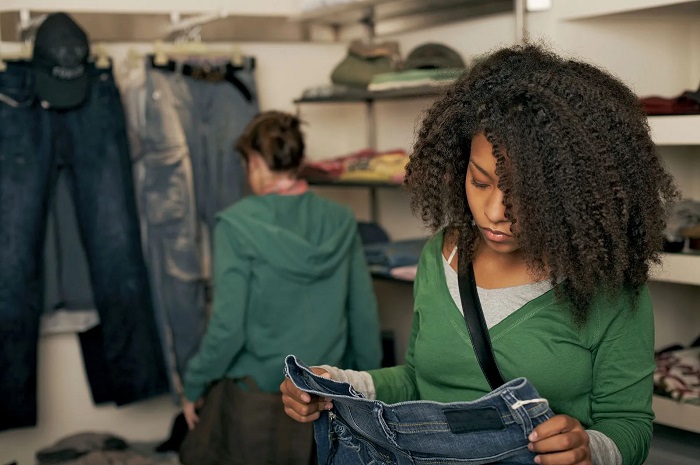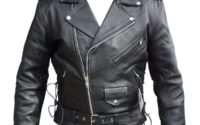The Fashion Retailing Industry is an Method of Fashion Merchandising
Fashion Retailing
Fashion retailing acts as the connection or link between the trendy manufacturer of the product and the customer. Fashion retailers can purchase fashion products from a variety of manufacturers (Vendors) and import directly products from across the nation their own brand. Fashion retailers have to be aware of what customers want. They should be aware of shifts in the habits of people’s lives and their preferences. Retailers have to demonstrate how to how to put together and embellish their outfits. Students studying UG/PG levels of fashion, design technology or fashion manufacturing, fashion merchandising are able to select the retailing of fashion as their profession options. They could be the store merchandisers, store owners and store manager with expected salaries and emoluments. having a broad knowledge base and experience, to become a successful businessman.
These products are sold to customers through their stores, via catalog, or on the internet or through television. A real breakthrough in Fashion Business Fashion Business in lastly achieved in the retail sector through customer acceptance as measured by purchases.

There are a variety of tailors that are required to create an effective retail store.
- Effective management.
- It was well-planned and executed logistics
- A convenient location
- A relaxing environment
- Afficient source
- Awe-inspiring and appropriate stock
- Helpful sales people
- Buyers who are aware of the customer’s needs
- Keeps customers’ service.
The most important thing is that retail stores require a distinctive vision, and the ability to execute this vision more efficiently. Most of the time, success is also more based on the sheer size of the business than superior merchandise vision or in the development of new ideas.
In smaller stores there are a handful of people who handle the buying and selling tasks by using agency or freelance help from outside. The purchasing line is behind the scenes; the store line interacts directly with the customers on regular basis. The aim of both lines is to make the cost of profit. The primary responsibility for the line of store is operation.
- In order to coordinate receiving as well as the flow of the goods and personnel inside the shop.
- To train sales associates.
- To provide customer support
- To control expenses
- To keep building
- To ensure security
In the end store line managers need to collaborate with the merchandise managers, buyers and sales associates to achieve positive sales outcomes. Everyone who is involved in the running of the store should be organized to reach this end goal.
Director of Stores, who oversees the line of stores, is responsible for each store manager in several units. Store managers are accountable for the sales, staff, merchandising and overall efficiency that the shop. They generally assign responsibilities to floor managers or area managers who oversee department managers.
Managers of departments and their assistants manage departments, and communicate and relay information regarding products to managers and buyers. They also take out merchandise, label retailers, and offer many opportunities to manage. It is essential for buyers to have experience of dealing with customers on the line of sales. Most courses in retail education require students to have experience in the store line to better understand or improve customer service.
Fashion retailers are constantly trying to meet consumer demands with value, service and entertainment, as well as exclusive merchandising, and international expansion. There is an increased interest in urban shopping malls are expanding and renovating to remain in business.
Retail operations comprise department stores, specialty retailers, Mass merchants, and mail-order and Electronic Retailers. There are single – and multiple unit stores. others are growing into chains. The functions of stores consist of marketing and merchandising finance, and store operations. In smaller stores, more jobs are managed by just one or two employees. In larger stores, each task is overseen by an executives.
To stay competitive The retailer has to focus on the requirements of the customer it is trying to reach. To be able to appeal to the buyer, the store should possess a distinct and appropriate image that is reflected through its merchandise marketing, services, and merchandise.
Buyers design plans for advertising. This includes direct mail, digital retailing. They also plan for visual merchandise, and other special events. Buyers can request advertisements in accordance with their product plans and negotiate with vendors for co-op cash. They aid in determining the type of ad they want and also the media. They need to supply the merchandise along with full information about it to the advertising copywriter and review the ad copy to ensure its accuracy. They should then ensure that the item was delivered and placed present on the floor of the shop when the ad is displayed.
Visible-merchandising: Patrons may request and in retailer shows for specific merchandise. They should also ensure that there is a sufficient assortment of the product is displayed in case a customer decides to buy.
Event Special: The buyer can initiate events or fashion industry. For example buying an exclusive collection could make arrangements with the fashion industry office of an artist to present an appearance in person to showcase the latest collection.
To assess the effectiveness of marketing tactics, customers review the sales figures prior to and after an add the event, display, or. They attempt to determine if the strategies worked in selling.
The customer service aspect has grown extremely crucial, as has sales training and incentive programs. Acceptance of customers in the context of sales is the foundation for the success and profitability of Fashion retailing. Fashion retailers are constantly faced with the need to meet the needs of customers more efficiently and effectively in order to continue growth and improvement.
Fashion retail stores should always offer a substantial amount of each kind of item. Numerous branded items with different prices will increase the value. Fashion industry does not just mean clothing, but also accessories such as belts, ties for males and women, scarves, sandals jewellery, shoes (imitations and antiques) fragrances, cosmeticssuch as bangles, products and foundation wear, as well as sport/active clothes for women and men which can be stored apart to attract every people of all ages who visit the shops to increase their motivation to buy. The attractive discounts, Buy One take one deal or seasonal offers, festivals sale, clearance sale are sure to increase the number of customers coming to the stores and buying their necessities.
The term “promotion” refers to indirect or not personal, and is not selling. It is targeted to an audience of a wide range. It attempts to grab the attention of the public by appealing to the desires and needs of the people. The aim of fashion industry marketing is to get people interested in certain clothing and products , so that they are more likely to purchase these items. Promoters want consumers to feel that they “have to own” the most current products.
Fashion industry promotion encompasses public relations, advertising, merchandise, and video merchandise. Advertising is a promotional message from a sponsor identified. Publicity is a free form of promotion. It can refer to all messages that are not paid to the general public regarding the company’s products, activities or products. Visual merchandising involves displaying goods in an appealing and understandable way. The way that goods are displayed in the public eye is a crucial factor in achieving significant sales. Exhibitions and displays are methods that merchandise is promoted visually. Video merchandising can be a powerful promotional instrument that has become widespread, retailers rely on its entertainment benefits for generating traffic to their shops.
The goal of fashion retailing is to please clients and to make their business more profitably for the long haul.


